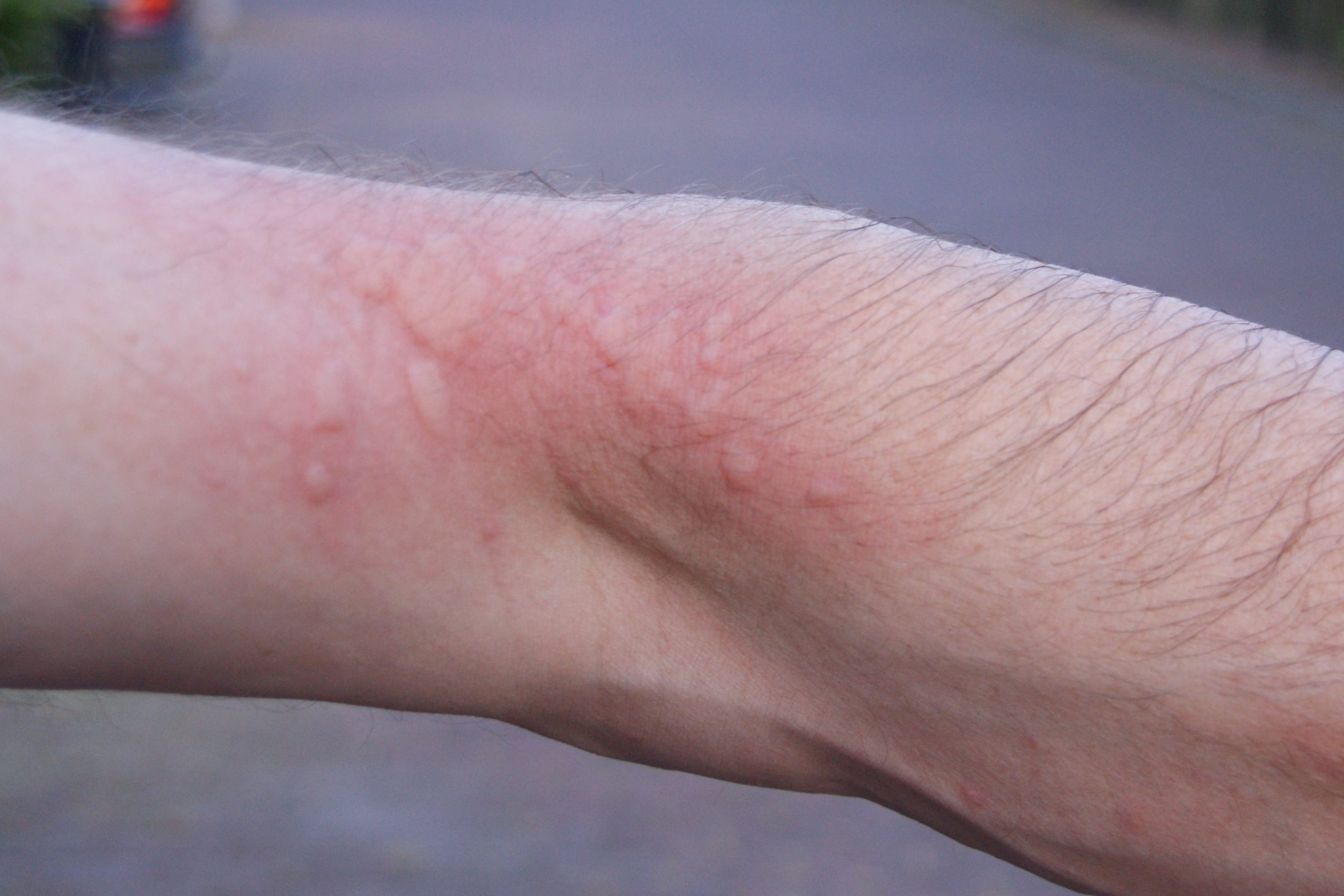Your first duty as an owner or manager of oak tree or trees in the areas affected by oak processionary moth (OPM) is to protect yourself and others, and pets and livestock, from the health risks which the pest poses.

The caterpillars (larvae) develop tiny, irritating hairs from their third (L3) growth stage onwards to pupation. A fully grown caterpillar can have thousands of hairs, which are barbed and contain an irritating substance called thaumetopoein.
Contact with the hairs can cause itching skin rashes and, less commonly, sore throats, breathing difficulties and eye irritations. In rare cases it can cause an allergic reaction. This can happen if people or animals touch caterpillars, their nests and materials such as bark or grass with hairs sticking to them. The hairs can also be blown into contact by the wind.
The greatest risk period is May to July, but hairs can be present on old nests, and could be blown or touched at any time of year.
Below are some simple precautions which will help to minimise the risk to people.
DO NOT:
DO:
Further advice is available from the NHS website.
People working on or close to oak trees in the affected areas need stronger protective measures, including personal protective equipment (PPE). (See Section 8: Occupational health.)
Curious pets, such as dogs and cats, and browsing and grazing livestock such as cattle, horses, sheep, goats, deer and pigs, are the most susceptible to contact with OPM hairs.
Cats and dogs can get hairs on their paws, which they then lick to try to relieve the irritation, transferring the irritating hairs to their mouths. They can also come into mouth and nose contact by sniffing, licking and picking up caterpillars or nests.
The resulting irritation of the tissues in and around the mouth and nose can cause swelling and consequent breathing difficulties and distress. Surgery can sometimes be needed, and in extreme cases the animal might have to put down.
Livestock can come into mouth and nose contact with hairs on the grass or other plants they eat. Hairs can be transferred on to the skins and into the eyes and ears of all animals by the wind, or when they sit or lie on ground where shed hairs have landed.
Preventative and mitigating measures include:
Consult a veterinary surgeon if you think your animal has been seriously affected. Tell the vet that you suspect contact with OPM caterpillar hairs.